| No. | Activity | Description |
|---|---|---|
| 1 | Old Port of Marseille | Historical and cultural heart of the city |
| 2 | Basilique Notre-Dame de la Garde | Iconic church with panoramic views |
| 3 | Le Panier | Charming old quarter with narrow streets |
| 4 | Château d’If | Famous fortress and former prison |
| 5 | Museum of European and Mediterranean Civilizations (MuCEM) | Modern museum featuring Mediterranean culture |
| 6 | Calanques National Park | Stunning natural area with cliffs and coves |
| 7 | La Canebière | Main historic street with shops and cafes |
| 8 | Palais Longchamp | Grand palace with museums and gardens |
| 9 | Vallon des Auffes | Quaint fishing village |
| 10 | Marseille History Museum | Museum showcasing city’s history |
| 11 | La Corniche | Scenic waterfront promenade |
| 12 | Les Docks Village | Shopping and dining complex in renovated docks |
| 13 | Frioul Archipelago | Group of islands with beaches and hiking trails |
| 14 | La Vieille Charité | Historic building housing museums and cultural spaces |
| 15 | Saint-Victor Abbey | Ancient abbey with rich history |
Explore the Old Port of Marseille

Name and Location: The Old Port of Marseille is located along the Mediterranean coast in the heart of Marseille, France. It is one of the city’s most famous landmarks.
History and Significance: The Old Port dates back over 2,600 years to around 600 BC when Greek settlers first arrived. It has been an important trading harbor and port city throughout history. Today it remains a thriving port and is the economic heart of Marseille.
What to Expect: Visitors can explore the harborfront, see fishing boats and yachts, enjoy seafood restaurants, visit museums, and take boat tours to nearby islands. It’s a bustling, lively area with historic architecture and a unique Provençal charm.
Visitor Information: The port is open daily and free to wander. Guided walking tours and boat tours are available for a fee. The area is very walkable and full of cafes, shops, and attractions.
The vibrant Vieux-Port (Old Port) is the heart of Marseille. Take a walk along the harbor promenade and admire the yachts and fishing boats bobbing in the water. Numerous cafes and restaurants line the quay, perfect for sitting waterside and soaking up the atmosphere. Don’t miss Fort Saint-Jean, a fortification guarding the entrance to the Old Port since the 17th century. It now hosts the Museum of European and Mediterranean Civilisations.
Relax at the Calanques National Park
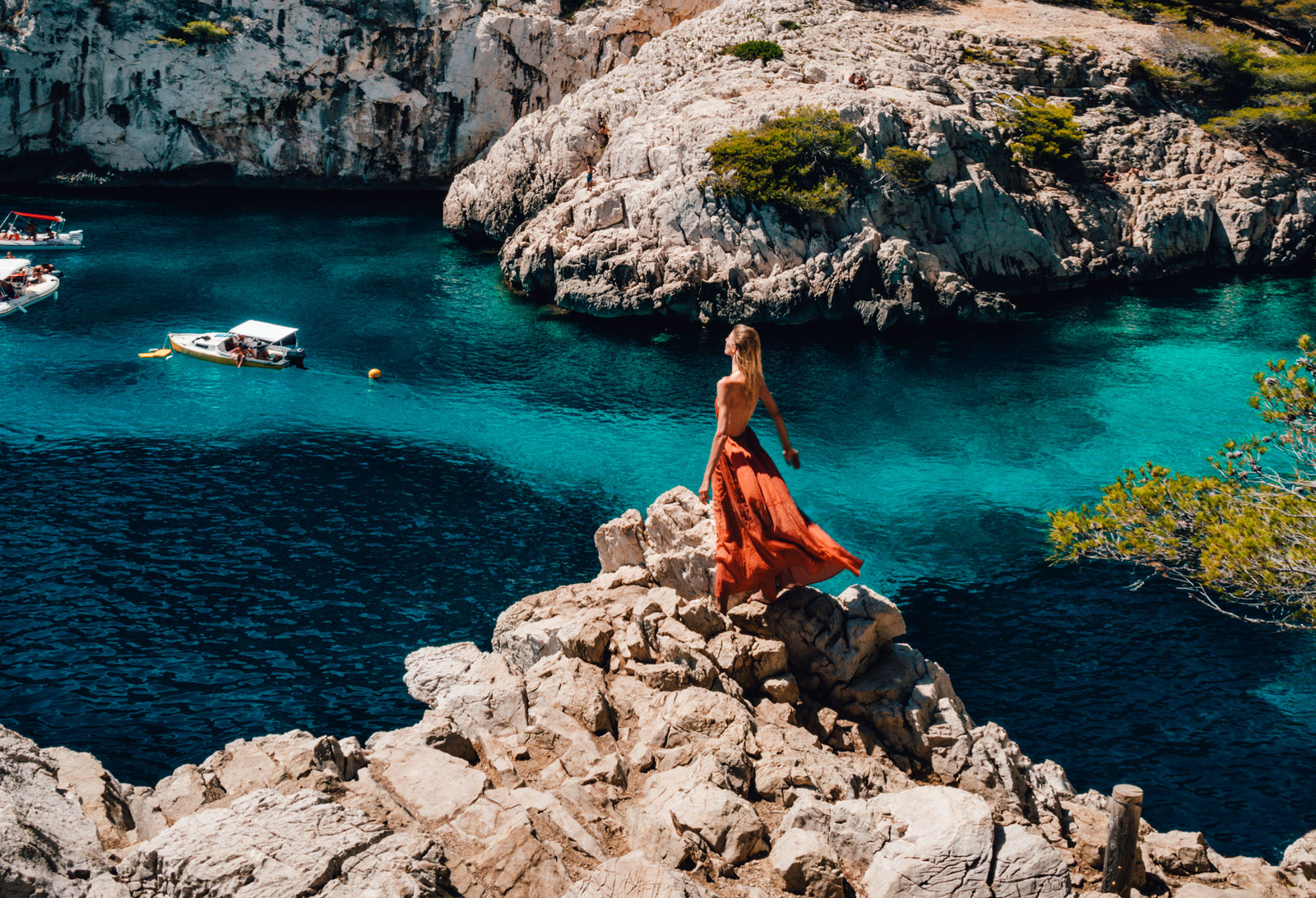
Name and Location: Calanques National Park is located along the Mediterranean coast just south of Marseille. It stretches from Marseille to Cassis.
History and Significance: The Calanques are dramatic rocky inlets, cliffs, and coves carved into the limestone massif by the sea. This unique landscape has been protected since 2012 when it became France’s newest national park.
What to Expect: Hiking, swimming, boating, rock climbing, viewing the diverse ecosystems and breathtaking Mediterranean landscapes. The crystal clear turquoise waters are ideal for swimming and diving.
Visitor Information: The park is open year-round. The best way to access the Calanques is by boat from Marseille or Cassis. Hiking trails range from easy to difficult. Permits are required for certain trails in peak season.
Just 20km south of Marseille lies the stunning Calanques National Park, with its bright turquoise coves and sheer limestone cliffs plunging into the sea. Go hiking along the many trails to discover hidden calanques (coves) like Calanque de Sormiou and Calanque de Morgiou. Or rent a boat to access more remote spots. The pretty fishing village of Cassis provides a gateway to the park.
Wander Le Panier Neighborhood

Name and Location: Le Panier is the oldest district of Marseille, located just north of the Old Port.
History and Significance: It dates back to the ancient Greek settlement and has winding narrow streets and pastel colored buildings. Historically home to immigrants and the working class, today it’s a charming neighborhood with artisan shops, cafes, and museums.
What to Expect: Wandering the quaint cobblestone streets, local markets, unique boutiques, art galleries, shops, restaurants, and historic churches and squares that reflect its multicultural past.
Visitor Information: The neighborhood is compact and walkable. Guided tours are available. Don’t miss La Vieille Charité, Museum of African, Oceanic and Amerindian Arts, and Cathedrale de la Major.
One of Marseille’s most picturesque and historic neighborhoods, Le Panier sits on a hill north of the Old Port. Its pastel-colored houses, narrow lanes adorned with laundry lines, petite squares, and streetside cafés will transport you to Provence. Don’t miss Place de Lenche, Rue du Panier, and Rue des Repentis to see Le Panier at its most charming.
Visit Notre-Dame de la Garde
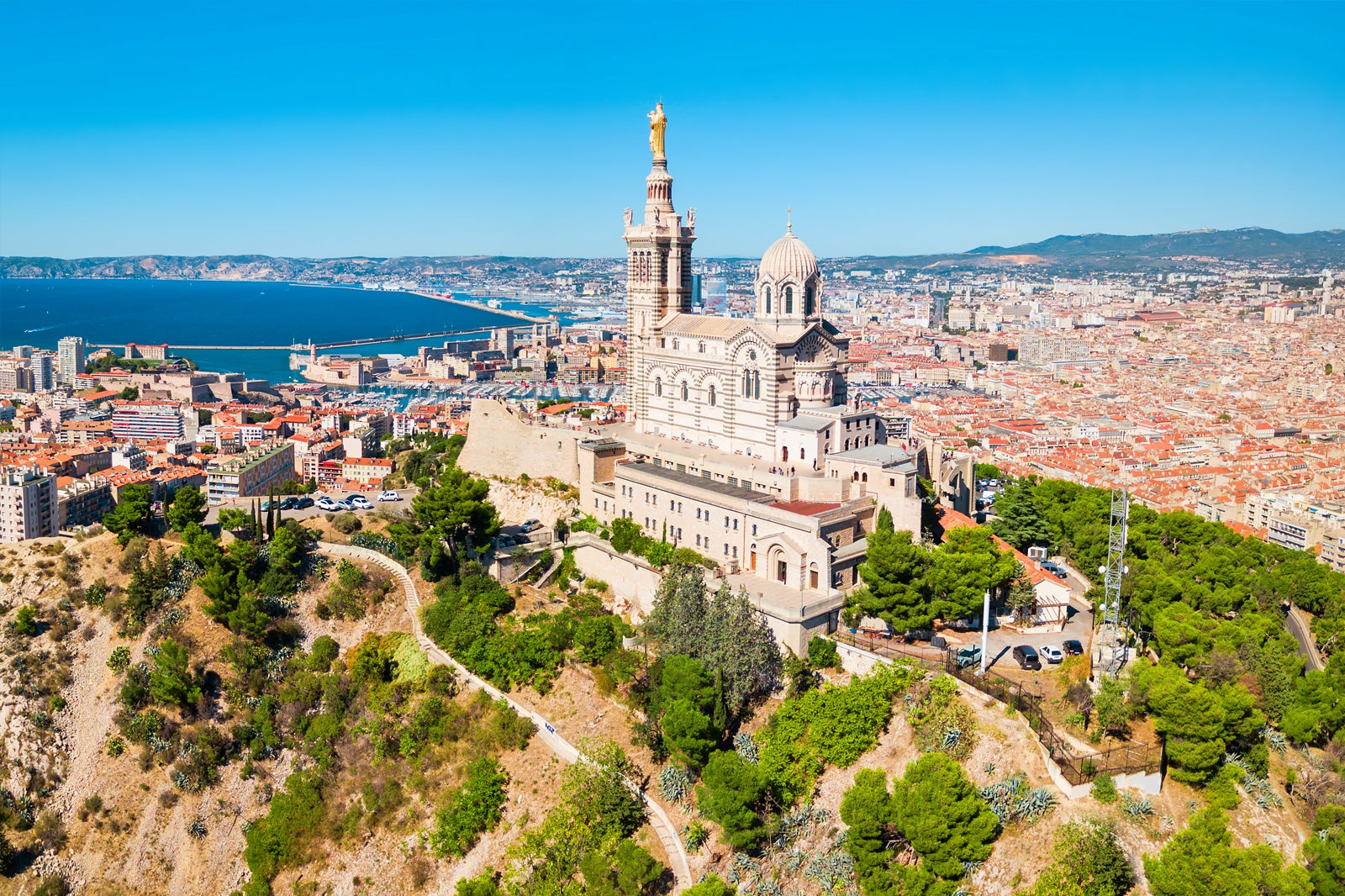
Name and Location: Notre-Dame de la Garde is a historic basilica located at the highest natural point in Marseille.
History and Significance: This ornate Neo-Byzantine church was built in the 19th century on the foundations of a 16th century chapel. Topped with a monumental gilded statue of Madonna and Child, it is Marseille’s most iconic landmark.
What to Expect: Climb the steps or take a tourist train to the top for stunning 360° views of the city, islands, and Mediterranean coastline. Admire the architectural details, mosaics, bells, and votive boats inside.
Visitor Information: The basilica is open daily and accessible by car, taxi, public transport or on foot. There is an admission fee to access the upper levels. It is a popular site for weddings and baptisms.
Visible from around the city, the opulent Romano-Byzantine Notre-Dame de la Garde basilica stands sentry on Marseille’s highest natural point. Take the tourist train or hike up to admire the panoramic views. Gaze over the glittering sea,Old Port and city layout. The interior has beautiful Italianate mosaics, with votive boats hanging from the ceiling.
Explore MuCEM Museum

Name and Location: The Museum of European and Mediterranean Civilisations (MuCEM) is located at the entrance to Marseille’s Old Port.
History and Significance: Designed by architect Rudy Ricciotti, MuCEM opened in 2013 in two iconic modern buildings connected by a sky bridge. The exhibits showcase Mediterranean civilizations and anthropology.
What to Expect: Immersive multimedia exhibits, artifacts, artworks, workshops, concerts and conferences related to Mediterranean cultures and history across three galleries – permanent collection, temporary exhibits, children’s museum. Stunning architecture and sea views.
Visitor Information: Open Wednesday – Monday. Ticket prices vary by exhibit. Onsite cafe and restaurant. Can combine with a visit to the adjacent Villa Méditerranée and Fort Saint-Jean.
In a striking contemporary building on the Old Port, MuCEM (Museum of European and Mediterranean Civilisations) hosts thought-provoking exhibits on Mediterranean societies and cultures. Don’t miss the views from the rooftop cafe. For the full experience, cross the footbridge to visit the connected site, Fort Saint Jean, a 13th century fortification.
Dine at the Old Port
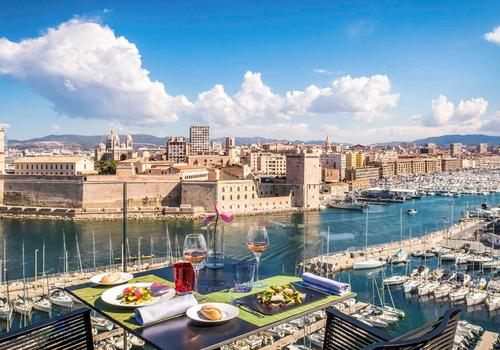
Name and Location: The restaurants and cafes along the Old Port of Marseille.
History and Significance: For centuries the Old Port has been home to restaurants and cafes offering fresh seafood, Mediterranean cuisine and a vibrant dining scene.
What to Expect: Waterfront dining with views of boats and the port. Menu highlights include bouillabaisse, fresh fish, panisses, ratatouille, aioli, cheeses and regional wines. Lively atmosphere and people watching.
Visitor Information: Prices range from budget to high end. Make reservations for dinner. Try Le Miramar, Peron, Les Arcenaulx. Arrive hungry and ready for delicious French and Provençal specialties.
With so much vibrant energy focused around Marseille’s Old Port, it’s the perfect place to sample Provençal cuisine or classic French fare. Quai des Belges is lined with restaurants and their outdoor terraces, all tempting you to sit down for some moules frites (mussels and fries), seafood platters, or grilled sardines. For fine dining, try Peron, with two Michelin stars.
Go Shopping on Rue Paradis and Rue St Ferréol

Name and Location: Rue Paradis and Rue St Ferréol are two main shopping streets in Marseille.
History and Significance: These pedestrian streets have long been the heart of commerce and retail in the city center. They are lined with shops, cafes and historic architecture.
What to Expect: Trendy boutiques, French chains, souvenir shops, market stalls, cafes for people watching. Find everything from fashion and jewelry to savon de Marseille soaps, fabrics, crafts and local delicacies.
Visitor Information: The streets are located just south of the Old Port. Shops are open daily. Go in the morning or late afternoon when they are less crowded. Have cash on hand for the markets.
For retail therapy Marseillaise-style, head to Rue Paradis and Rue St Ferréol, two pedestrianized streets lined with shops and cafes. Find everything from designer French fashion at Galeries Lafayette, to quirky handicrafts, shoes, macarons and more. Sit streetside at a cafe with an espresso or pastis when your feet need a break. Don’t miss side streets like Rue Francis Davso with cute boutiques.
Explore the Markets at Noailles Quarter
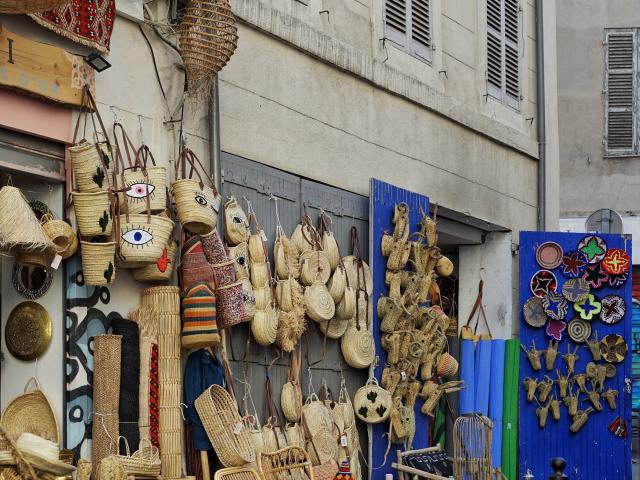
Name and Location: Noailles is one of the oldest neighborhoods in central Marseille, known for its bustling markets.
History and Significance: For centuries, Noailles has been inhabited by waves of immigrants who brought new cultures and products to Marseille. Markets reflect this diversity.
What to Expect: Vibrant open-air markets with vendors selling spices, produce, meat, fish, fabrics, household goods, and more. Exciting sights, sounds, and aromas that represent Marseille’s multiculturalism.
Visitor Information: Best on mornings Tuesday-Sunday. Haggle for deals. Watch out for pickpockets. Explore surrounding streets to experience authentic Marseille neighborhood life.
For a multicultural slice of Marseille life, immerse yourself in the bustling street markets held at Noailles Quarter. Each morning the Place Jean Jaurès, Rue d’Aubagne and Rue Longue des Capucins come alive with fruit and vegetable stands, halal butchers, fishmongers and lively cafes. The cries of market vendors mingle with North African conversations under canopies of colorful textiles and aromatic spices.
Take a Day Trip to Aix-En-Provence
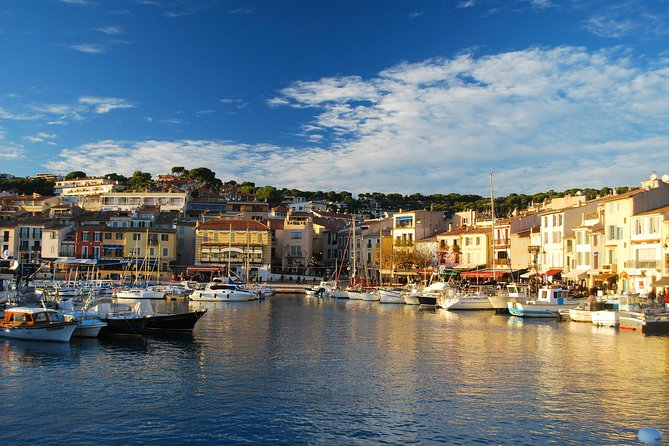
Name and Location: Aix-en-Provence is located about 30 km north of Marseille in the Provence region of southern France.
History and Significance: Aix was founded in 123 BC by the Romans and was the capital of Provence. It thrived under various rulers and is full of winding medieval streets, charming fountains, markets, cafes, and historic sites.
What to Expect: Strolling picturesque streets, visiting museums, soaking in the ambience of elegant squares, shopping at markets, and sampling Provençal cuisine. The city has a relaxed, artistic vibe.
Visitor Information: Take the train from Marseille for a quick 30 minute trip. Explore the pedestrian city center on foot. Don’t miss Cours Mirabeau, Cathedrale Saint-Sauveur, and Musee Granet.
The elegant city of Aix-en-Provence, famous for its artistic and cultural connections to figures like Cézanne and Zola, makes an easy day trip from Marseille. Stroll tree-lined avenues and squares, browse chic boutiques, relax at a cafe patio on Place des Trois Ormeaux and visit the Atelier Cézanne where the artist painted. The TGV train takes just 30 minutes between cities.
Visit Château d’If
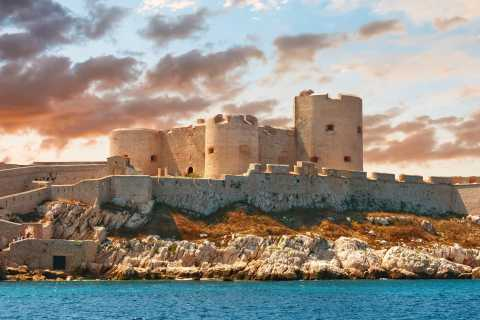
Name and Location: Château d’If is a fortress located on If Island in Marseille’s Bay of If off the coast of Marseille.
History and Significance: This 16th-century island fortress was immortalized in Alexandre Dumas’ novel The Count of Monte Cristo. It later became a prison and has a dark, ominous history.
What to Expect: Guided tours of the castle, dungeons and cells. Audio guides recount the history. Stunning views of Marseille and the sea from the tower. Boat rides to and from the island.
Visitor Information: Access by boat from the Old Port. Tours available daily 10am-5pm. Allow 2-3 hours total. Bring water and snacks. Wear comfortable shoes for the rocky paths and stairs. Limited accessibility.
Made famous by Alexandre Dumas’ novel The Count of Monte Cristo, the 16th century Château d’If sits on an island 3km west of Marseille. Catch a ferry from the Old Port out to explore this fortress-turned-prison with an ominous past. Peer into the dungeons and cells which held the anonymous prisoner who inspired Dumas. The views of Marseille are also spectacular.
See Art at the Cantini Museum

Name and Location: The Cantini Museum is an art museum housed in the 17th century Hôtel de Montgrand in Marseille.
History and Significance: Opened in 1936, the museum has an important collection of modern art dating from the beginning of the 20th century to the present day.
What to Expect: Works by Picasso, Dufy, Ernst, Miró, Warhol, Bacon, and local Provençal artists. Temporary exhibitions. Historic architecture provides a lovely backdrop. Audio guides available.
Visitor Information: Located in Le Panier district. Open Tuesday-Sunday. Admission fee. Close to other museums and attractions. Cafe onsite.
Housed in a 17th century hôtel particulier mansion, the Musée Cantini has an impressive collection of modern art including works by some big names like Picasso, Léger, Ernst, Miró, and Warhol. But the real appeal lies in the lesser-known yet just as talented artists. Don’t miss iconic Marseillaise artist Simon Hantaï. The shady sculpture garden is ideal for a break.
Take a Day Trip to the Camargue
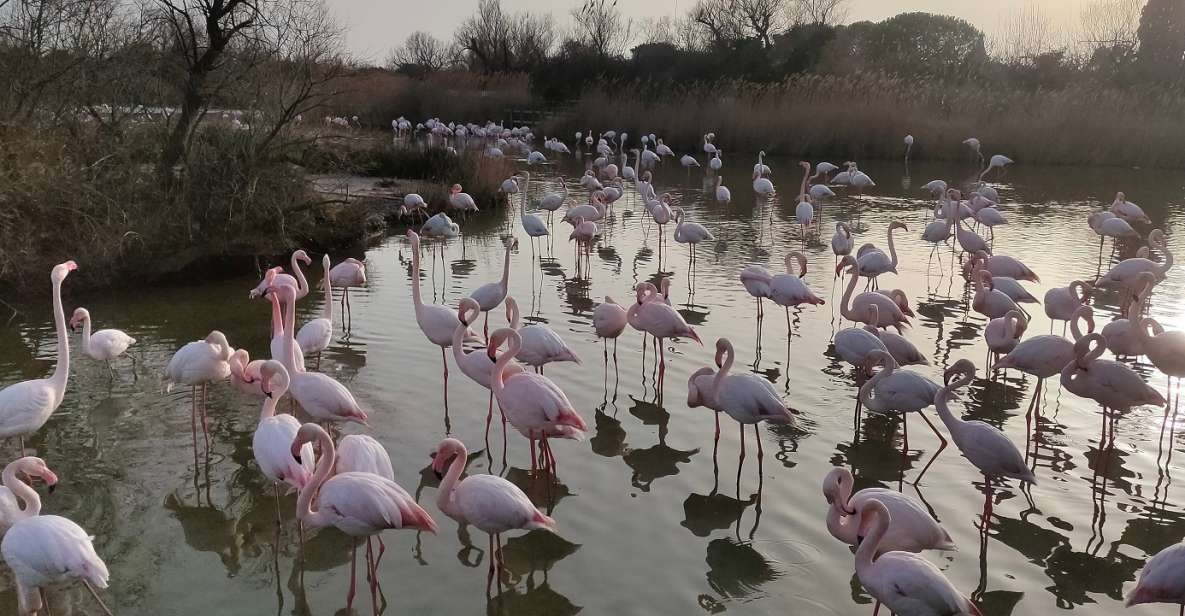
Name and Location: The Camargue region is a wetland along the Mediterranean coast south of Arles and west of Marseille.
History and Significance: This is the Rhône river delta where the river meets the sea. These marshes and lagoons provide critical ecosystems for birds, fish, and wildlife. The area has a long cultural history.
What to Expect: Spotting the Camargue’s famous white horses and pink flamingoes. Visiting medieval villages, rice paddies, salt marshes, and sanctuaries that protect the biodiversity. Nature walks, birdwatching, biking, horseback riding.
Visitor Information: Access by car or bus tour from Marseille/Arles. Visit spring/summer when wildlife is abundant. Pack binoculars, hat, sunscreen, water. Respect nature and keep distance from wildlife.
Just an hour’s drive south of Marseille, the wild natural wetlands of the Camargue offer a beautiful change of scenery for a day away from the busy city. Spot the famous white horses and black bulls bred here on a jeep safari tour. Go birdwatching to see pink flamingos and other migratory species. Or admire brilliant purple lavender fields blooming in summer while the salty marshes stretch to the horizon.
Explore the Vallon des Auffes
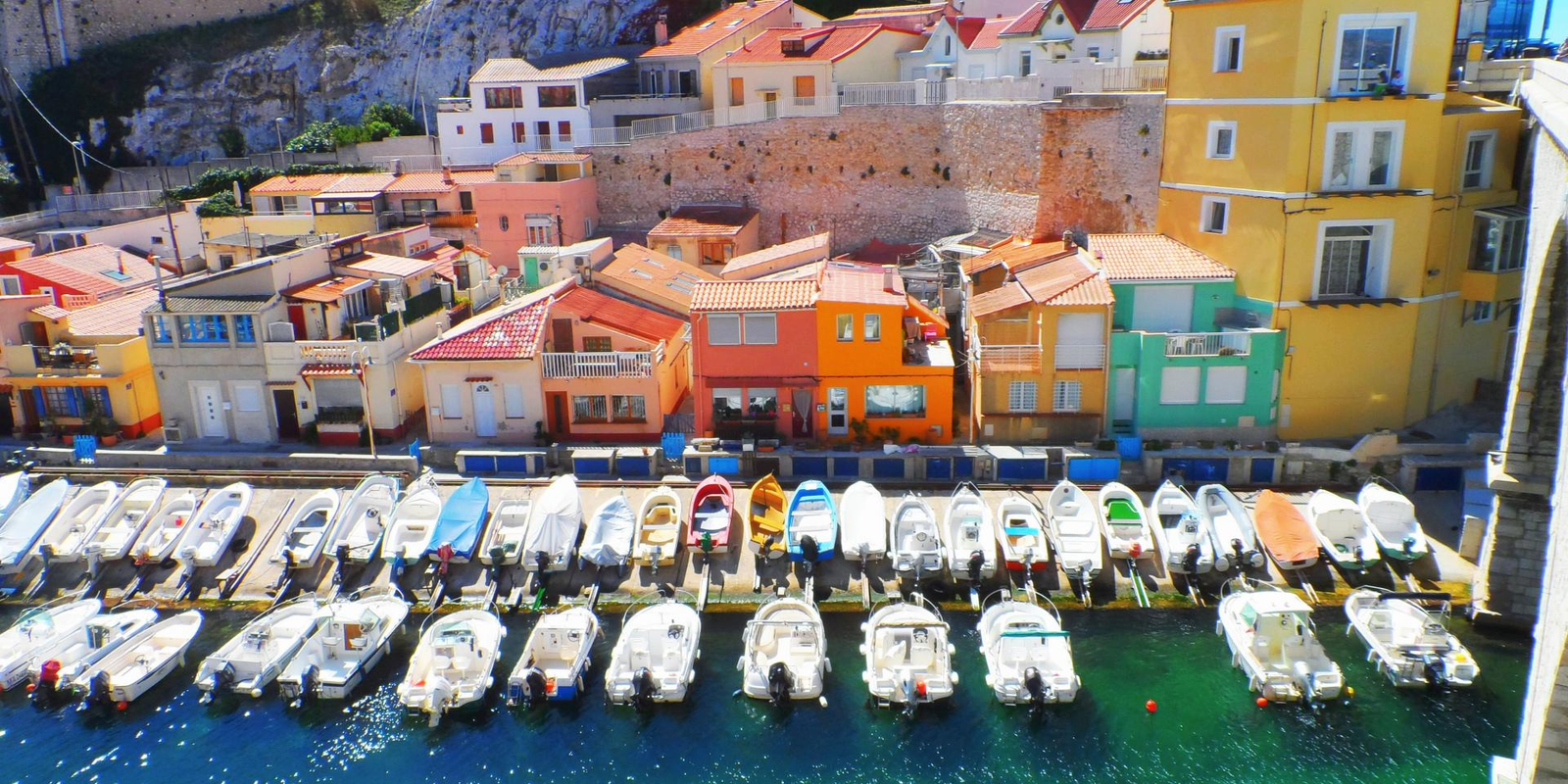
Name and Location: The Vallon des Auffes is a traditional fishing village nestled in a small cove south of central Marseille.
History and Significance: Settled since ancient times, this picturesque village has long been home to Mediterranean fishermen and their families. The traditional cabanons (fishermen’s huts) line the pebbly beach.
What to Expect: Charming seaside village vibe, delicious fresh seafood dining, pretty coastal views, small beach, boats in a tranquil inlet, local shops and cafes. Escape the city bustle.
Visitor Information: Walk, drive, bus, or boat to reach it just south of the city center. Have a meal of bouillabaisse, stroll the shoreline, relax. Avoid summer crowds.
Nestled under the Corniche, the sleepy fishing village of Vallon des Auffes feels hidden away from the city. With boats bobbing in the tiny harbor, fishermen mending nets, a petite chapel on the pier and a handful of seafood restaurants, it’s an idyllic spot. Arrive hungry to eat right on the water’s edge. Or just stroll and admire this hidden gem seemingly unchanged through the years.
Watch an OM Soccer Match

Name and Location: The Orange Vélodrome stadium, home ground of Olympique de Marseille football club.
History and Significance: OM is the city’s beloved professional soccer club, founded in 1899. Their home stadium, Stade Vélodrome, was built in 1937 and hosts rowdy, passionate crowds.
What to Expect: Exciting live match, avid fans cheering, chanting, waving flags and scarves. Electric atmosphere. Get into the local spirit by wearing the team colors and jersey.
Visitor Information: Matches are usually Wed/Sun nights. Get tickets in advance. Take public transport to avoid traffic. Arrive early to soak in the pre-game ambience. Be prepared for big crowds.
Nothing unites the people of Marseille more than their passion for the city’s beloved football team, Olympique de Marseille (OM). Watching a match is an experience like nowhere else. The atmosphere positively vibrates with energy at the iconic Stade Vélodrome stadium. Sing, cheer and bond with 60,000 frenzied fans. Football is not just a sport here, it’s a religion.
Take a Wine Tour of the Region
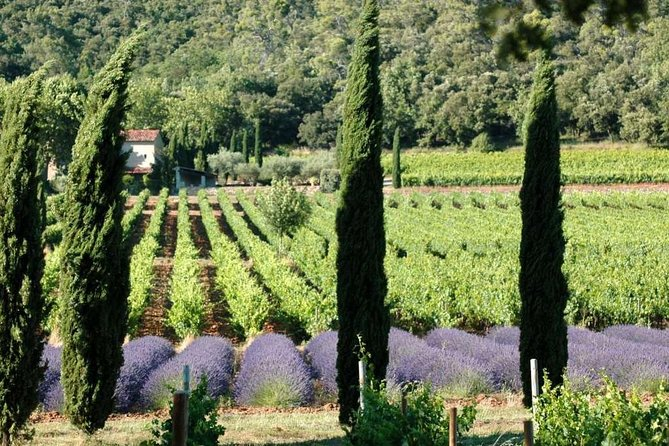
Name and Location: The wineries and vineyards outside Marseille in Provence.
History and Significance: Provence has produced wine since ancient Roman times. Varietals like rosé, red, and white wines come from this sun-drenched region.
What to Expect: Sampling crisp rosés, fuller reds, aromatic whites. Winery and vineyard tours and tastings. Learning about wine making, terroir, grape varietals. Picnics among the vine-covered hills and charming villages.
Visitor Information: Book winery tours in advance from Marseille. Designated driver recommended. Top regions include Bandol, Cassis, Côtes de Provence. Pair wine with regional foods and cheeses.
As capital of the Provence wine region with vineyards skirting the city, Marseille provides easy access to the vineyards producing crisp Cassis whites and the earthy reds of Bandol. The area surrounding Aix-en-Provence makes for gorgeous scenery while sipping. Or visit Châteauneuf-du-Pape a bit further afield for prestigious appellations. Many tours operate day trips from Marseille by bus or private driver.
Relax at Les Goudes Beach
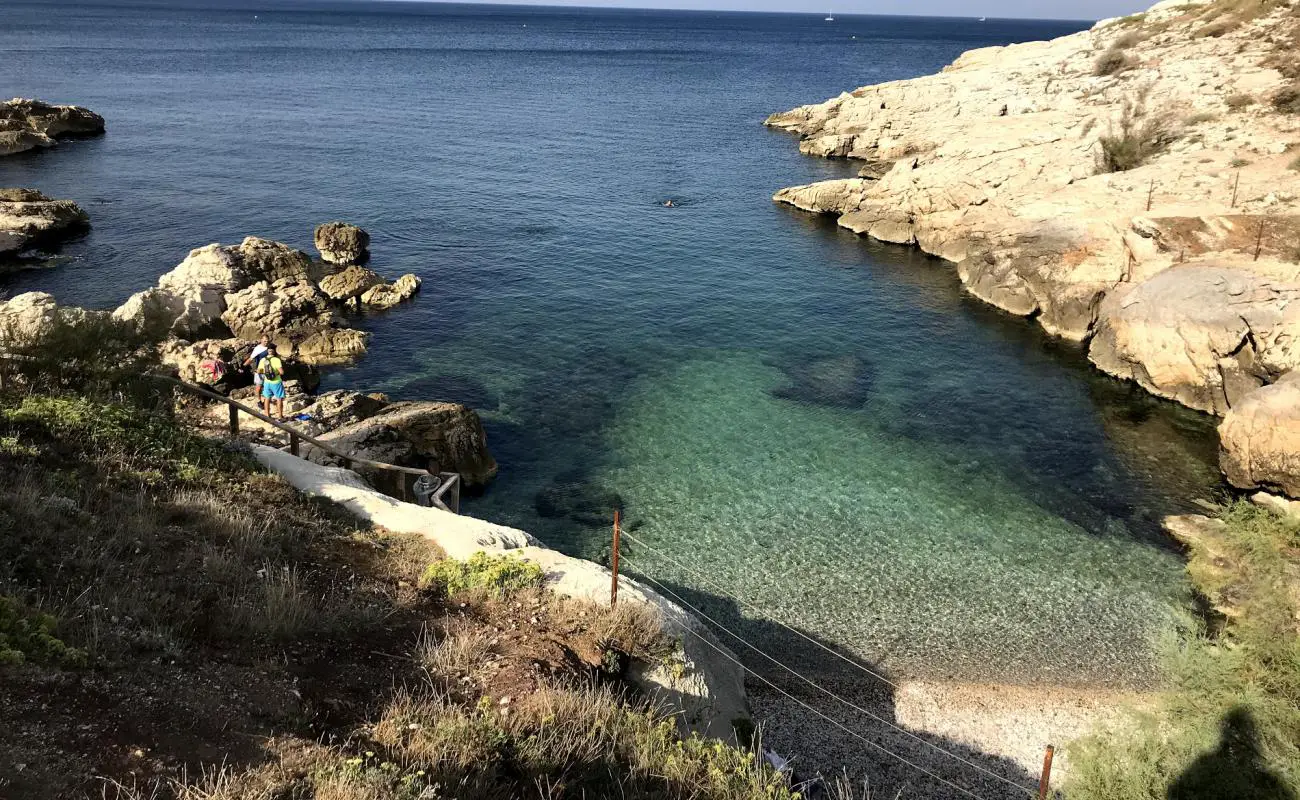
Name and Location: Plage des Goudes is a public beach located south of Marseille’s city center.
History and Significance: This sheltered natural cove has offered a nearby beach getaway for locals since the late 19th century. Today it remains a popular spot to swim, relax, and enjoy seaside restaurants.
What to Expect: A laidback, local Mediterranean vibe. Calm blue waters, a backdrop of hills, nearby restaurants, and waterfront cafes. Swimming, sunbathing, people-watching.
Visitor Information: Free public beach access. Reach by bus, car, bike or walk along the coastal path. Best in late spring, summer, early fall. Come early to claim beach space. Beach gear rental available.
When you need some beach time without leaving the city, head to Les Goudes, just south of the Old Port. This sheltered cove offers swimming from smooth flat rocks or the little pebbly beach. The laidback vibe suits lounging in the sun or people watching from waterfront cafes. On summer weekends, the area fills with local families seeking an urban escape.
Conclusion
With its beautiful Mediterranean light, vibrant energy rooted in diversity, stunning surroundings of beaches and mountains and compelling history, Marseille seduces visitors, despite its gritty edges. In 2024, immerse yourself in culture, savor mouthwatering cuisine and experience the rhythm of southern French life in one of Europe’s oldest and most captivating port cities. From exploring bustling markets to admiring sea views while hiking the Calanques coastline, Marseille offers endless inspiration. Let your own adventure unfold.



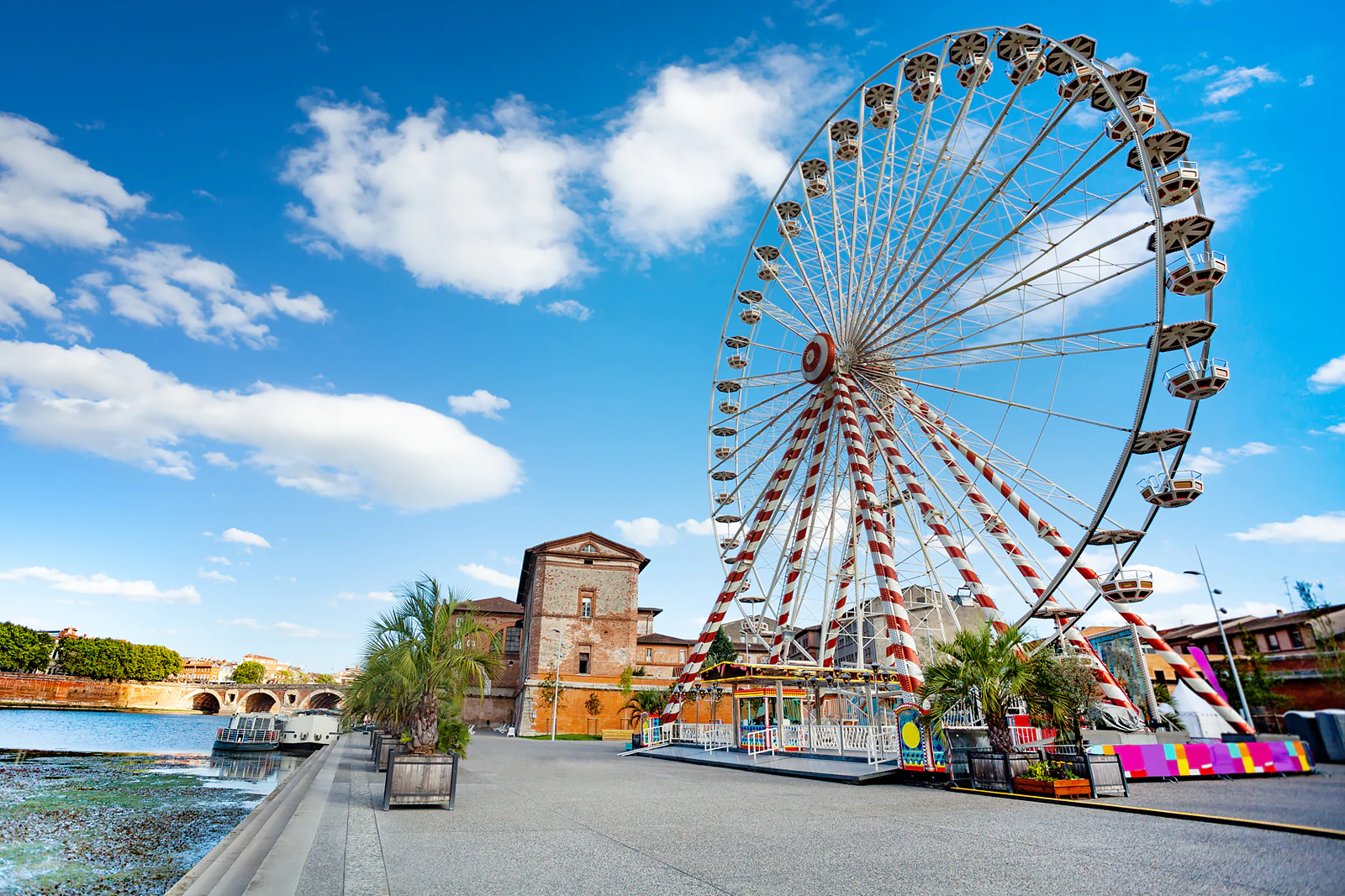
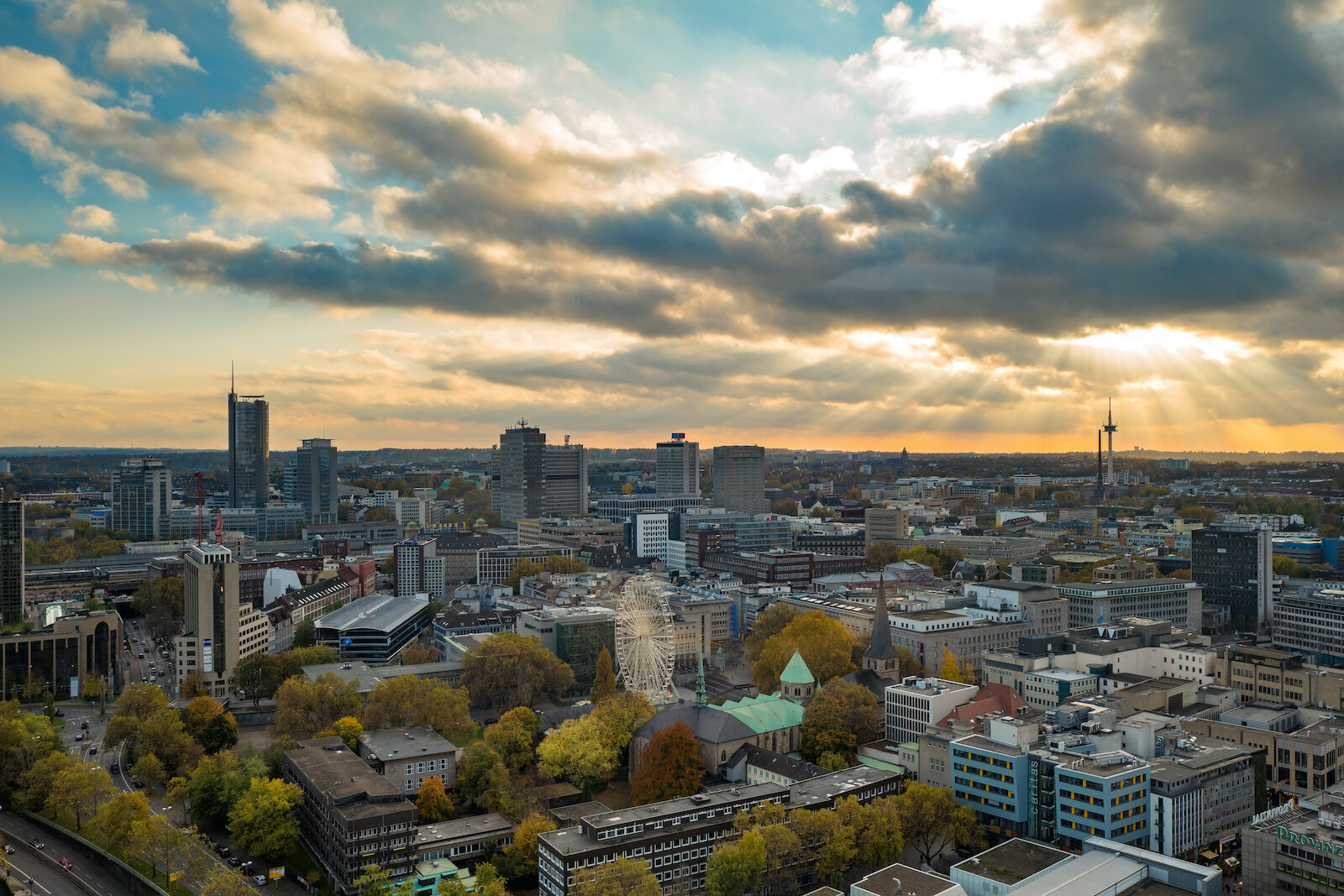
Join the Conversation